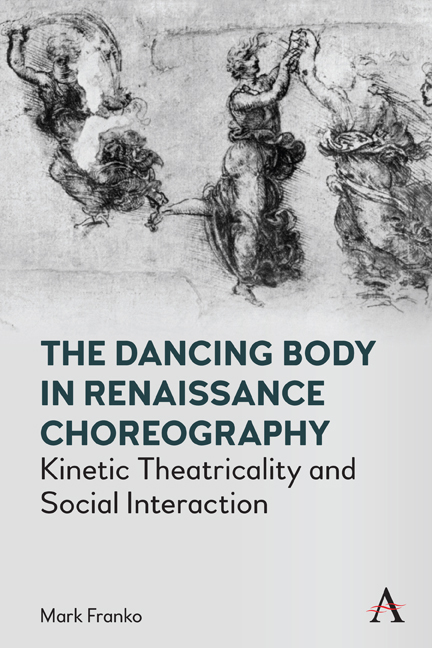Book contents
- Frontmatter
- Dedication
- Contents
- Preface to the Revised Edition
- Chapter 1 Introduction
- Chapter 2 The Mythological Intertext: Language
- Chapter 3 The Sociological Intertext: Courtesy
- Chapter 4 The Pedagogical Intertext: Precepts
- Chapter 5 The Political Intertext: Civil Conversatione (Social Intercourse)
- Bibliography
- Index
Chapter 3 - The Sociological Intertext: Courtesy
Published online by Cambridge University Press: 13 May 2022
- Frontmatter
- Dedication
- Contents
- Preface to the Revised Edition
- Chapter 1 Introduction
- Chapter 2 The Mythological Intertext: Language
- Chapter 3 The Sociological Intertext: Courtesy
- Chapter 4 The Pedagogical Intertext: Precepts
- Chapter 5 The Political Intertext: Civil Conversatione (Social Intercourse)
- Bibliography
- Index
Summary
“En cecy [la danse] la Pratique et la Theorie doivent estre deux accidens inseparables.”
[In this [dancing] Practice and Theory must be two inseparable accidents.]
—François de Lauze, Apologie de la Danse, 1623A. Dance as a “Theoretical” Practice of Propriety: Tuccaro
There is one Renaissance text that relates dance to civility on a theoretical level. In his Trois Dialogues de l’exercice de sauter et voltiger en l’air, essentially a gymnastic treatise, Archange Tuccaro devotes the first of three dialogues to an apology of the dance. Neither the apology nor the theoretical positions emanating from it are supplemented with practical examples of dancing. This is a theoretical text as far as dance is concerned. My discussion of it is meant merely to confirm, within the epistemological framework of the Renaissance, the relevance of a sociological intertext for the dancing body.
The dialogues unfold before the court of Charles the Ninth during a respite from the festive progress through Touraine celebrating his marriage with the Royne Elisabel. “Dans une grande sale, qui regardoit sur un jardin” (In a large hall overlooking a garden), the company is assembled to witness the leaps of the renowned gymnast Archange Tuccaro. Seigneur Cosme proposes that Tuccaro also expatiate on the “reigles qu’on doit observer, par le moyen desquelles il s’est exercé à réduire en art et méthode, la vraye démonstration, et certaine conoissance de l’exercice du saut tourné en l’air” (rules that must be observed, through which he went about reducing the true demonstration and certain knowledge of the exercise of the turning leap into an art and method). Prior to Tuccaro's demonstration and pedagogical discourse, a debate unfolds in the meta-language of the etymological tradition. “Il suffit,” says Cosme's interlocutor Ferrand, “que la proprieté des choses, mesmement des mots, se cognoisse, et s’entende selon la particulière signification qu’ils ont” (It suffices that the property of things, and in a like manner of words, be known and understood following the particular meaning they have). The crux of the debate is the etymological definition of the word Palaestrita, used by Cosme to predicate Tuccaro. Ferrand argues that Palaestrita does not apply to Tuccaro because the term Palestre refers to the activity and place of wrestling as well as to the wrestler himself, whereas Tuccaro is a master.
- Type
- Chapter
- Information
- The Dancing Body in Renaissance ChoreographyKinetic Theatricality and Social Interaction, pp. 33 - 52Publisher: Anthem PressPrint publication year: 2022



